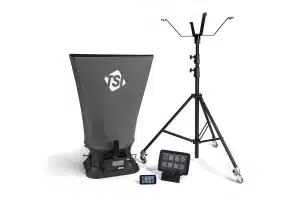Air conditioning airflow – How and why it is important

The best air conditioning brands can still be installed poorly. Although you may have spent $1000’s on a new system, you may still find inconsistencies throughout the property or individual rooms.
A lack of heating in one room or a hot corner of the living room, maybe the second story rooms are blowing a gale while the downstairs kitchen is stifling. Although there could be many reasons for these issues, one of the major problems is an imbalance of air quantity throughout the conditioned area. Without a correctly air balanced system, your air conditioner might have hot and cold rooms, uneven temperatures and may overshoot, resulting in an increase of operation costs.
Air quantity
Essentially, your air conditioner will produce a set quantity of air as designed when manufactured. This air quantity differs on the size of unit and the fan speeds but generally the larger the unit, the more air is produced. This air is conditioned, either hot or cold, and travels through ductwork to condition your property. Air quantity is usually measured in Litres Per Second as it exits the air conditioning vents. A common way to measure this is with the use of a Balometer. This is a hood that covers the entire vent and can measure the airflow in or out in Litres per Second also referred to as l/s.
Air balance
Balancing the amount of air from an air conditioning system is reasonably simple once you have accurate measures of airflow, in l/s, from each vent. The correct balance can be achieved in two ways; establish how many l/s is required per square metre and adjust each outlet to this OR establish how many l/s already present and then adjust the airflow evenly per square metre. This may sound confusing but put simply, first method works on a correctly calculated quantity of air for the space which is then evenly distributed (newer and correctly designed systems) and the second method calculates the existing airflow which is then evenly distributed (any system including older, incorrectly designed systems).
Hopefully I haven’t lost anyone yet…..
Air balance adjustments are made using a balancing blade. This blade is installed in the splitter, or y-piece, and can be manually adjusted to reduce or increase the airflow as required. In new systems, adjustments can be made through a zone controller, eliminating the need to gain access to the roof. This is only relatively new and requires some technical setup during installation.
Air Flow Measurement tools
At T&K Airpower we use a Accubalance Flow hood by TSI. This flow hood has served us well over the last few years and is a key piece of equipment when accurately measuring airflow. This equipment is distributed within Australia by kenelec.

How to correctly balance an air conditioning system
This is a simple step by step process to balance an existing air conditioning system:
This will require some form of air flow measurement device such as a Flow Hood/Balometer. We use the Accubalance Flow Hood when measuring and calculating air flow.
- Measure the total square metres your air conditioner is conditioning (every room with an outlet).
- Measure the total airflow, l/s, from each outlet. Ensure all zones are switched on and the fan motor is set to high on the wall controller.
- Divide the total airflow, l/s, by the total square metres. Eg. 150m2 of floor space and 1200 L/S = 8 l/s per square metre. The 8 l/s will be required for every square metre of conditioned space.
- Multiply the l/s per square metre by the square metres in each room. Eg Master bedroom is 9m2 and has 1 outlet. This means this 1 outlet requires 9m2 x 8 l/s = 72 l/s
- Complete this calculation for every room with air conditioning vents. If an outlet has 2 or more vents, workout the total l/s for the room and evenly divide between each vent. Eg a room requires 300 l/s with 2 vents installed, this equals 150 l/s from each vent.
- While taking measure of 1 zone at a time, adjust the airflow of each outlet to achieve the required l/s (best done by 2 people, 1 measuring and 1 adjusting).
- Re-measure all outlets and record l/s from each outlet. This should now match the measurements made in step 3 and 4.
- Your air conditioning system is now balanced and will ensure even airflow and temperature control throughout the conditioned space.